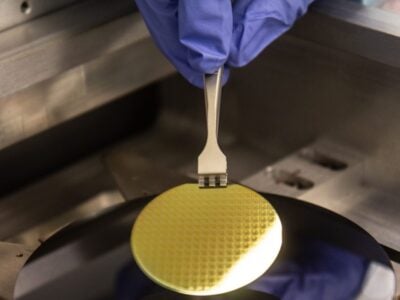
Is magnetoresistance the new Hall Effect for Micronas?
Hall sensor expert Micronas will continue to serve its existing automotive and industrial control customers in under its established brand, explained Bopp during an interview with eeNews Europe at the Sensor + Test trade fair in Nuremberg. In the focus of joint R&D activities will be the various magneto resistance (MR) technologies. Currently, there are first projects under way that make use of this technology known from read/write heads in fixed disk drives. MR sensors vary their resistance according to a surrounding magnetic field.
According to Bopp, MR technologies offer the benefit of very high sensitivity compared to hall effect sensors, Micronas’ present primary field of expertise. Existing varieties of MR technology include GMR (Giant Magnetoresistance) and TMR (Tunneling Magnetoresistance). Possible applications for TMR could be angular sensors and wheel speed sensors, Bopp explained. In comparison to hall effect sensors, TMR sensors offer much higher angular accuracy of ±0.2 degrees.
Nevertheless, a potential new business with xMR sensors would not cannibalize the existing business. “80 per cent of the sensors in cars today are hall effect sensors, and this won’t change much”, Bopp said. Instead, TMR sensors could open up a perspective to new application fields such as contactless position and current measurement.
The magnetoresistance technology however also poses some challenges: Since hall effect sensors are – in contrast to xMR – easy to integrate into CMOS semiconductors and thus are very cost-effective. “We are now investigating if it is possible to integrate xMR into other semiconductor technologies”, Bopp said. “And perhaps some time in the future there will be sensors available that combine hall effect and MR.” Such a combination would make sense in safety-relevant applications demanding redundancy. Bopp said his engineers are also considering MR applications for Micronas’ existing ARM-based microcontrollers.
Micronas’ semiconductor fab in Freiburg (Germany) will likely see higher capacity utilization, Bopp assumed, because the product spectrums of TDK and Micronas have almost no overlaps, and with TDK as the new owner, Bopp believes that Micronas will get access to new markets, in particular in the area of industrial applications.
Related articles:
TDK to swallow Micronas for its Hall-effect expertise
Hall-effect sensor design: What is the best way to suppress switching jitter?
 If you enjoyed this article, you will like the following ones: don't miss them by subscribing to :
eeNews on Google News
If you enjoyed this article, you will like the following ones: don't miss them by subscribing to :
eeNews on Google News




